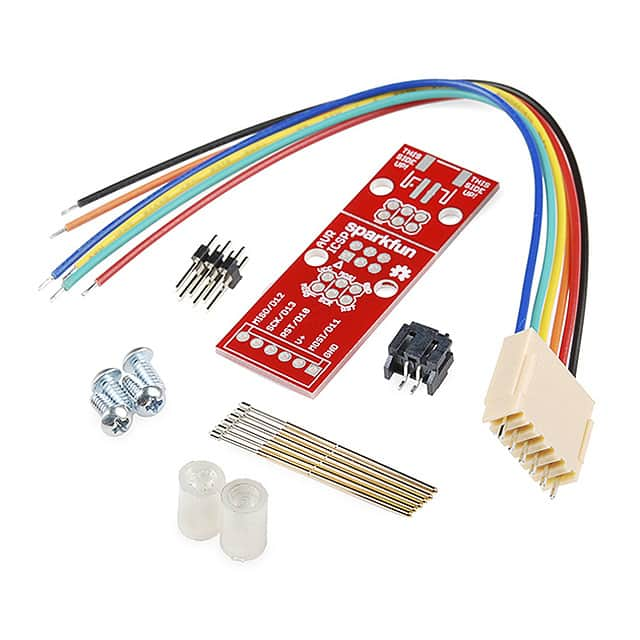Ⅰ. Maker/DIY, Educational
Ⅱ. Physical Characteristics of Maker/DIY, Educational
Ⅲ. Electrical Characteristics of Maker/DIY, Educational
Maker/DIY (Do-It-Yourself) is a movement that encourages individuals to create, design, and build their own projects and devices using various tools, materials, and technologies. It emphasizes the value of hands-on learning, experimentation, and creativity in developing practical skills and knowledge.

The Maker/DIY movement is often associated with the use of new technologies such as 3D printing, microcontrollers, and sensors, as well as with the open-source software and hardware communities that provide access to these tools and resources. The movement has gained popularity in recent years due to the increasing availability of affordable and accessible tools and materials, as well as the growth of online communities and resources for sharing knowledge and collaborating on projects.
The Maker/DIY movement has significant educational benefits, as it allows individuals to learn by doing and to gain practical experience in a variety of fields, including engineering, design, electronics, and programming. It also fosters creativity, innovation, and problem-solving skills, and encourages individuals to take an active role in shaping their own learning and development.
Maker/DIY education can take many forms, from formal education programs in schools and universities to informal learning communities and workshops. Maker/DIY projects can range from simple crafts and art projects to complex devices and systems, and can be tailored to suit the interests and abilities of learners of all ages and backgrounds. The Maker/DIY movement emphasizes the importance of hands-on learning, collaboration, and sharing of knowledge and resources, and provides a platform for individuals to develop practical skills, creativity, and a passion for lifelong learning.
Physical Characteristics of Maker/DIY, Educational
The physical characteristics of Maker/DIY and educational projects can vary widely depending on the specific project and its intended use. However, there are some common characteristics that are often associated with Maker/DIY and educational projects.
First, these projects often involve the use of various tools and materials, such as hand tools, power tools, electronic components, sensors, and microcontrollers. The materials used may include wood, metal, plastic, fabric, paper, and other materials that can be easily sourced and worked with.
Second, Maker/DIY and educational projects often involve a high degree of customization and personalization. Individuals can tailor their projects to suit their specific needs and interests, and can experiment with different designs and configurations to achieve the desired results.
Third, Maker/DIY and educational projects often involve a high degree of creativity and innovation. Individuals are encouraged to think outside the box and to come up with new and innovative solutions to problems.
Fourth, Maker/DIY and educational projects often emphasize the importance of collaboration and sharing of knowledge and resources. Individuals can work together on projects, share ideas and techniques, and learn from each other's experiences.
Fifth, Maker/DIY and educational projects often involve a high degree of hands-on learning and experimentation. Individuals can learn by doing, and can gain practical experience in a variety of fields, including engineering, design, electronics, and programming.
The physical characteristics of Maker/DIY and educational projects are diverse and can vary widely depending on the specific project and its intended use. However, they all share a common emphasis on creativity, innovation, personalization, collaboration, and hands-on learning.
Electrical Characteristics of Maker/DIY, Educational
The electrical characteristics of Maker/DIY and educational projects can also vary widely depending on the specific project and its intended use. However, there are some common electrical characteristics that are often associated with Maker/DIY and educational projects.
First, these projects often involve the use of electronic components such as resistors, capacitors, diodes, transistors, and integrated circuits. These components are used to create circuits that perform specific functions, such as amplification, filtering, and control.
Second, Maker/DIY and educational projects often involve the use of microcontrollers and programmable logic devices. These devices allow individuals to program the behavior of their circuits and devices, and can be used to create complex systems and interfaces.
Third, Maker/DIY and educational projects often involve the use of sensors and actuators. Sensors can be used to detect various physical quantities, such as temperature, pressure, and light, while actuators can be used to control mechanical systems, such as motors and servos.
Fourth, Maker/DIY and educational projects often involve the use of power supplies and batteries. These components provide the necessary electrical energy to power circuits and devices, and can be used to create portable and wireless systems.
Fifth, Maker/DIY and educational projects often involve the use of communication interfaces, such as serial, USB, and wireless protocols. These interfaces allow individuals to communicate with their circuits and devices, and can be used to create networked systems and IoT (Internet of Things) devices.
The electrical characteristics of Maker/DIY and educational projects are diverse and can vary widely depending on the specific project and its intended use. However, they all share a common emphasis on the use of electronic components, microcontrollers and programmable logic devices, sensors and actuators, power supplies and batteries, and communication interfaces.
标签:educational



